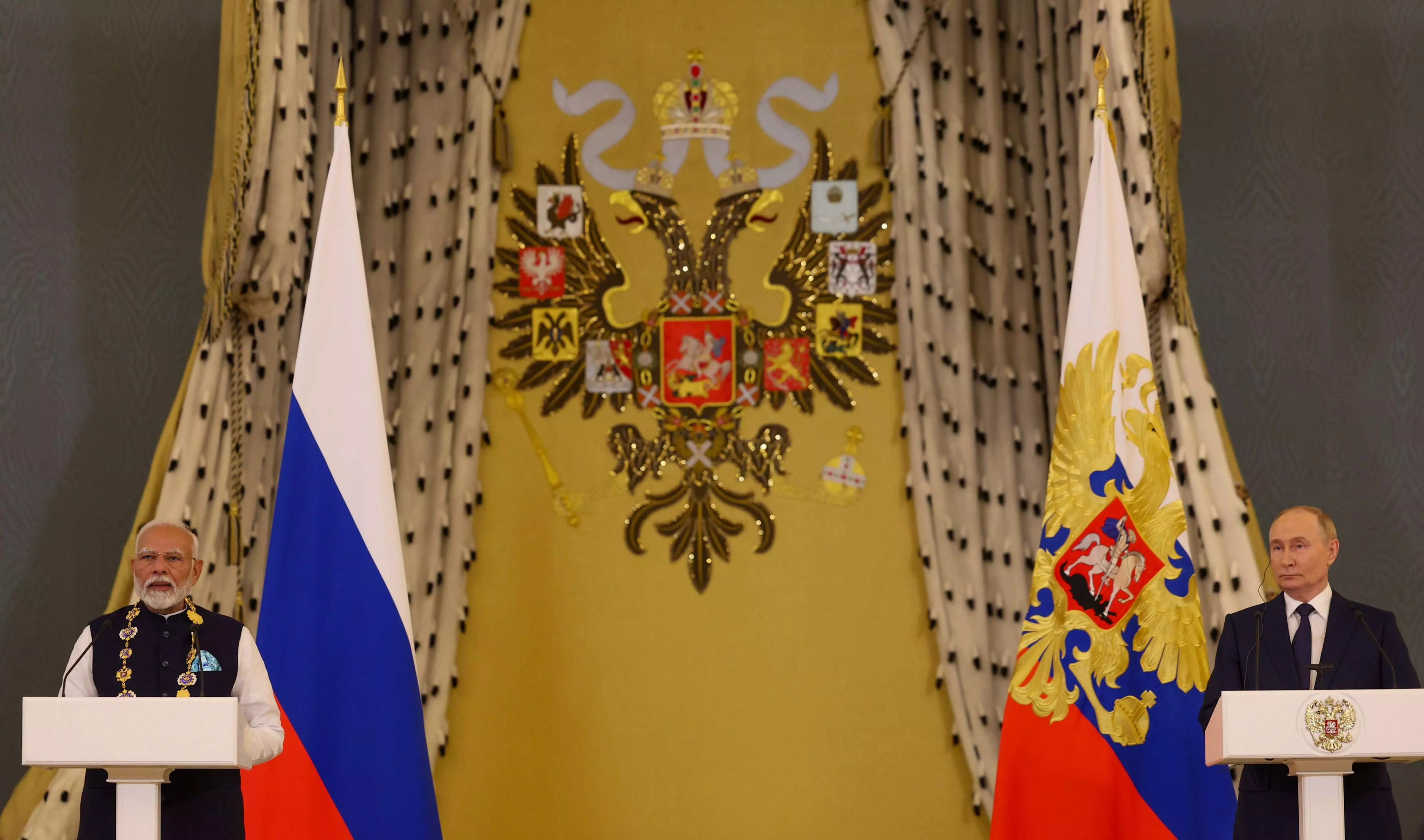Symbol of solidarity

Prime Minister Narendra Modi’s visit to Russia, in the very first place, has symbolically filled a significant void arising out of the omission of annual India-Russia summits over the past couple of years. Although India, for all practical purposes, has stood by its ‘all-weather ally’ amidst attempts to isolate it at the global level, it lacked the audacity to express its solidarity through a high-level visit. Perhaps it was a restraint that helped New Delhi cling to its position of striking a tightrope balance amidst a highly polarised geopolitical order.
At least in optics, the recent visit has created a tilt that can be sensed from Kyiv’s disgruntled narrative that Modi’s warm embrace of Putin is a “devastating loss” to the peace process—particularly when seen against the Monday strikes by Russia on Ukraine. Prime Minister Narendra Modi, however, stood his ground by reiterating that a solution to the Ukraine conflict cannot be found on the battlefield. Modi highlighted that any person who believes in humanity will be pained if there is loss of lives, particularly that of innocent children! However, despite being aware of the seriousness of atrocities committed in Ukraine, he could not gather enough audacity to publicly call out one of its most valuable allies. Following the Modi-Putin meeting, even the White House highlighted India’s role in potential resolution of the conflict. India, however, remains resolute on its principle of non-interference in the cases involving friendly allies.
As far as the specifics of the latest India-Russia annual summit are concerned, there is hardly anything of very high substantive relevance. Modi has reportedly managed to convince Putin to release all the Indians who claim they were enticed to Russia with promises of non-combat roles in the army, only to be subsequently coerced into active combat in Ukraine; although this aspect didn’t find mention in the joint statement of the two leaders. Additionally, India and Russia have agreed to boost bilateral trade to the tune of 100 billion by 2030. Ambitious trade prospects with Russia are, apparently, an accidental discovery—strengthened by recent leaps in trade and driven by unprecedented import of sanction-facing Russian crude. The USD 100-billion trade target may be feasible, but not without caveats. Of the overall trade of USD 65 billion, India’s exports constitute less than USD 5 billion. Such a trade imbalance might be counter-productive for a more comprehensive bilateral trade. Narendra Modi has hinted at the diversification of trade basket with Russia. However, these are still very early days to jump at any conclusion. Economic and trade relations between India and Russia are still at a nascent stage, despite the parties sharing decades-long, resilient ties in strategic and defense domains. For the sake of comparison, the bilateral trade between India and the US stood at a record USD 128.78 billion in FY23, with India enjoying a trade surplus of USD 28.30 billion. Another area where India-Russia ties lag behind is diasporic relations. Despite sharing strong cultural connections, Indian diaspora is limited in Russia. It is reported that during the Modi-Putin meeting, Russia agreed to India’s request of opening two new consulates in Kazan and Yekaterinburg. Additionally, the joint statement on trade and economic cooperation for the end of the decade addressed nine key issues including: the removal of non-tariff barriers; the creation of a ‘bilateral settlement system using national currencies’; streamlining customs procedures; utilising new connectivity routes like the Chennai-Vladivostok maritime route, the Northern Sea Route, and the International North-South Transport Corridor, among other things.
It is heartening to see that India and Russia are coming closer by exploring newer avenues of mutual cooperation. The age-old friendship is likely to receive a revamp by means of evolution. Such a diversification is crucial for India to maintain a power balance in Asia vis-à-vis China.



